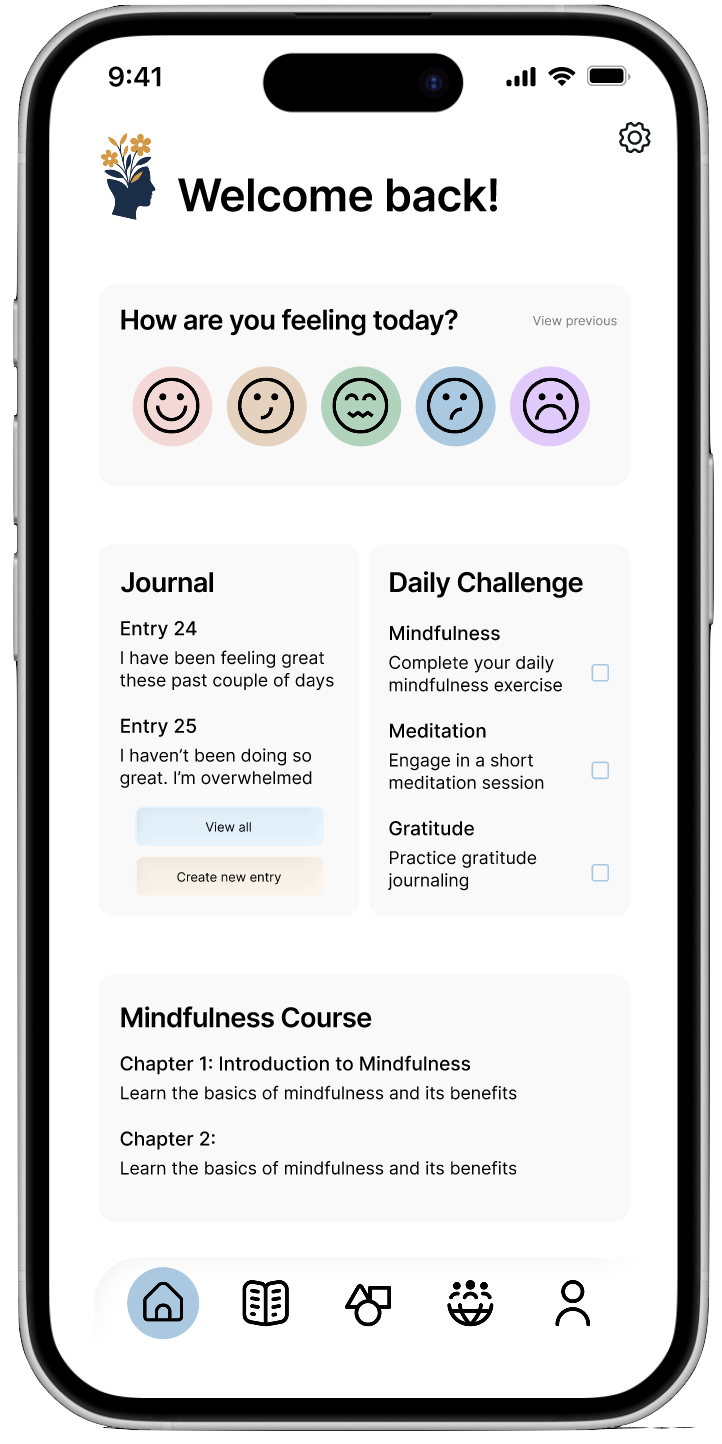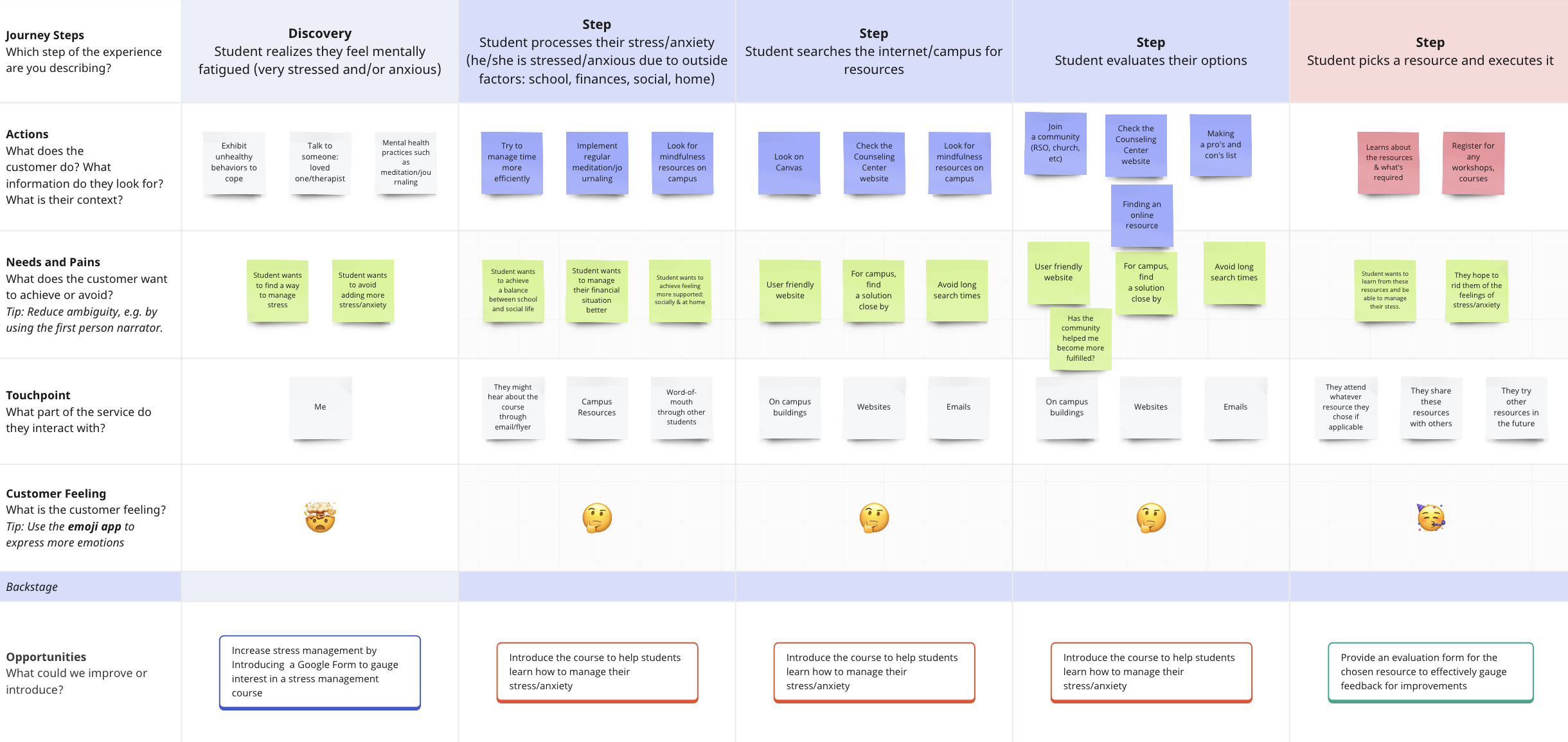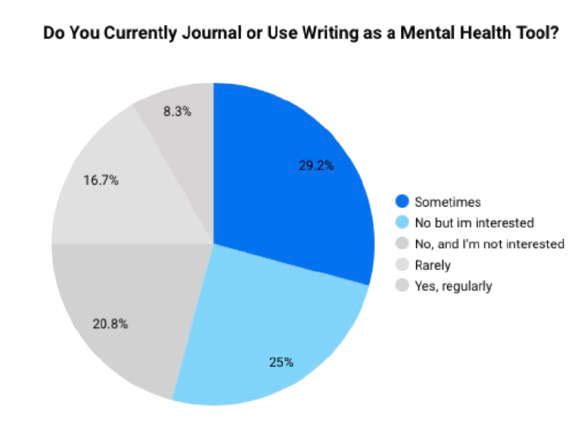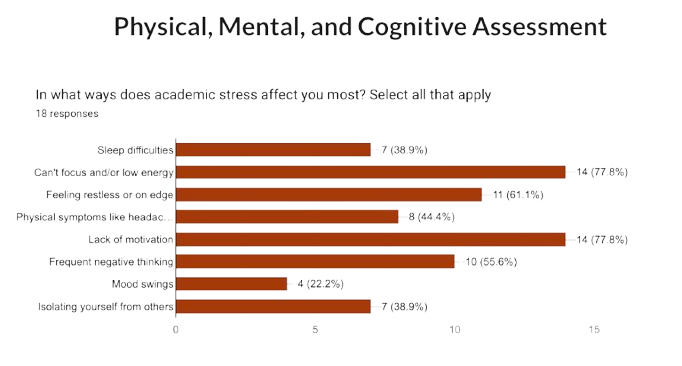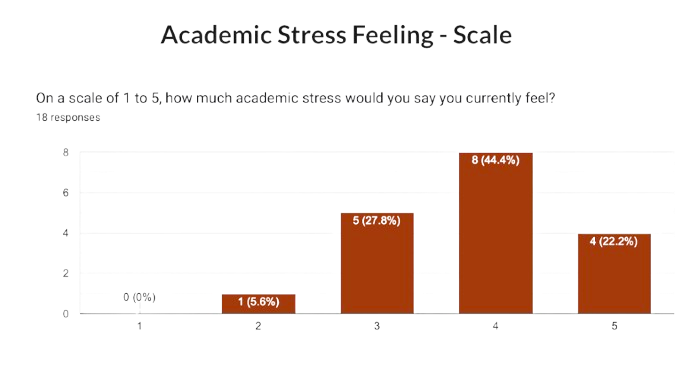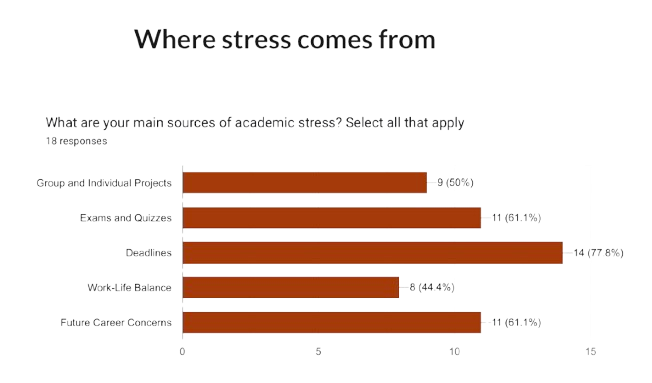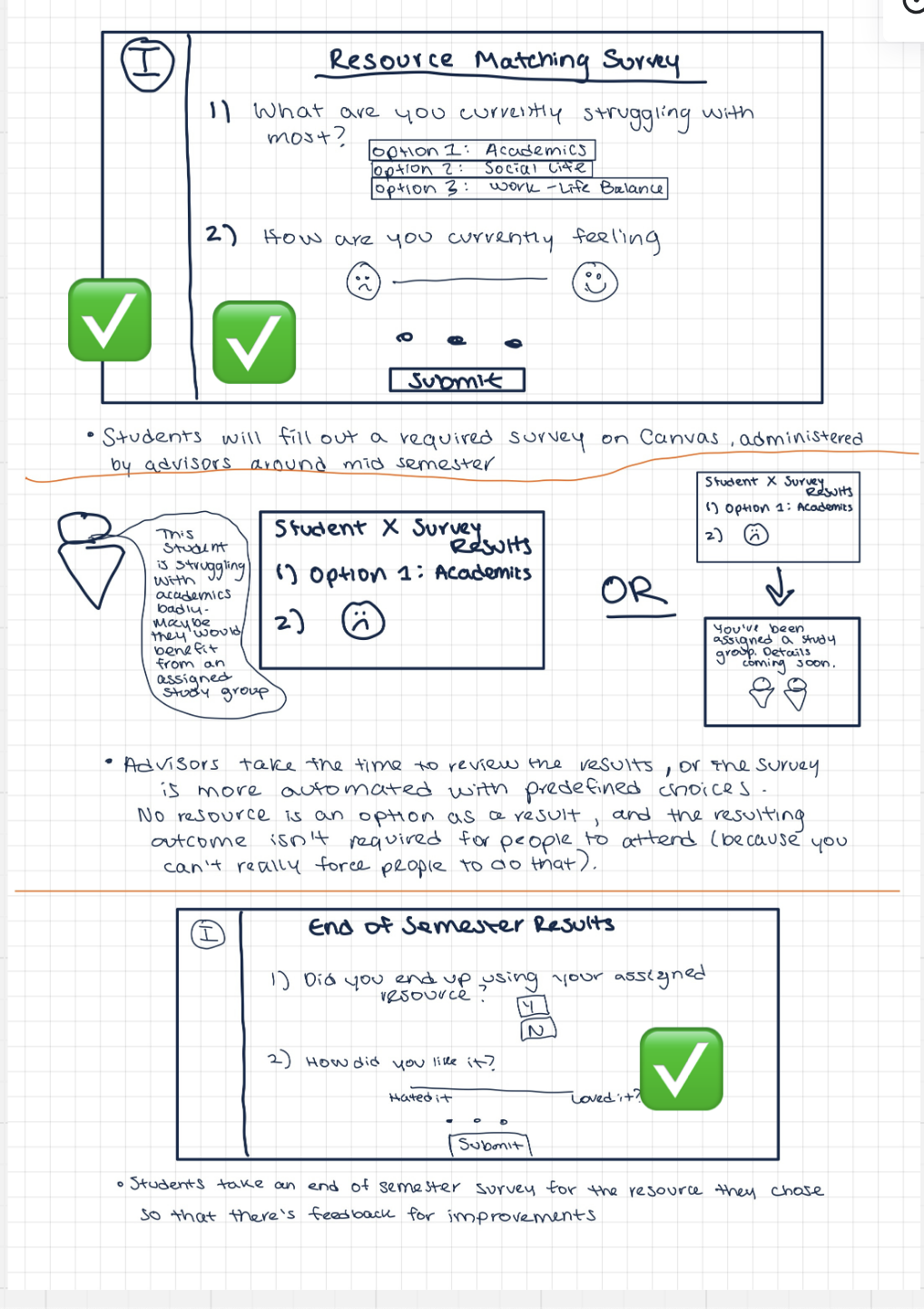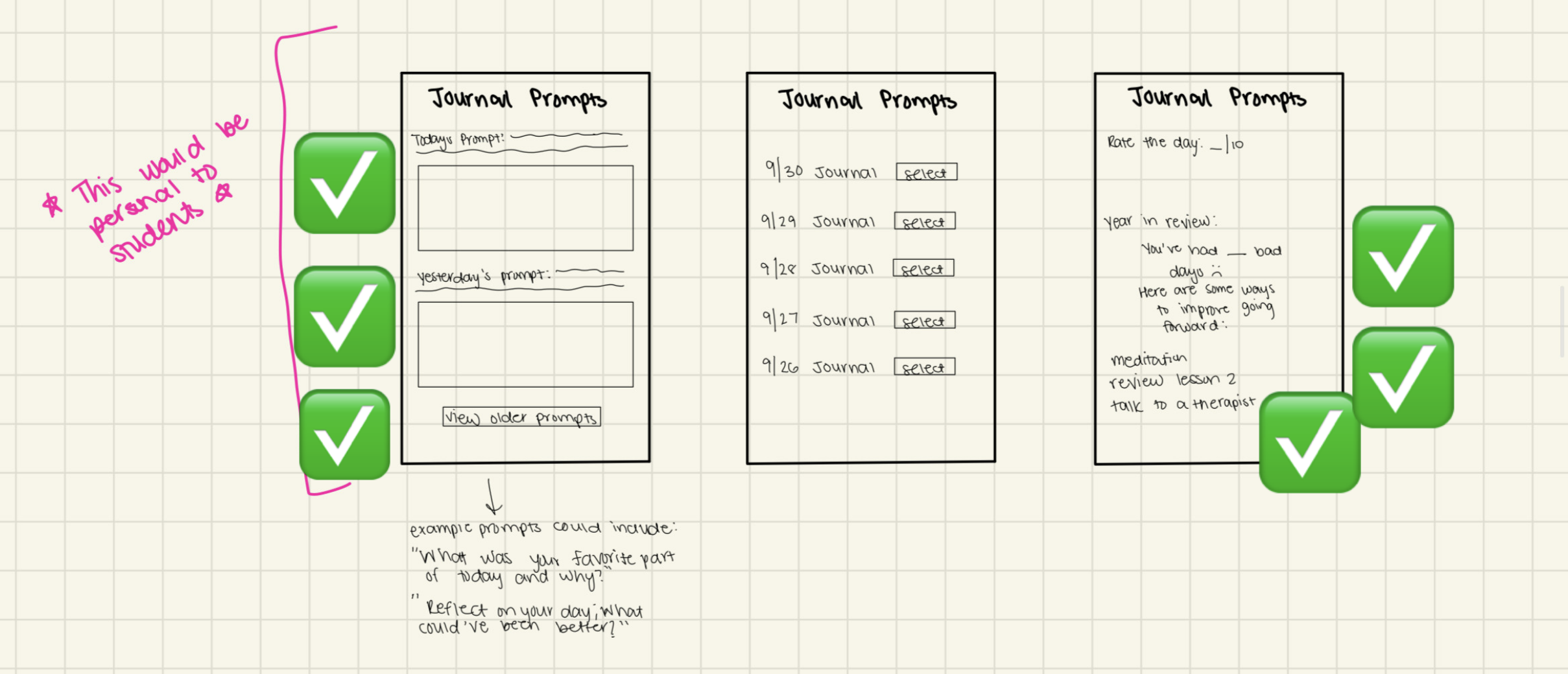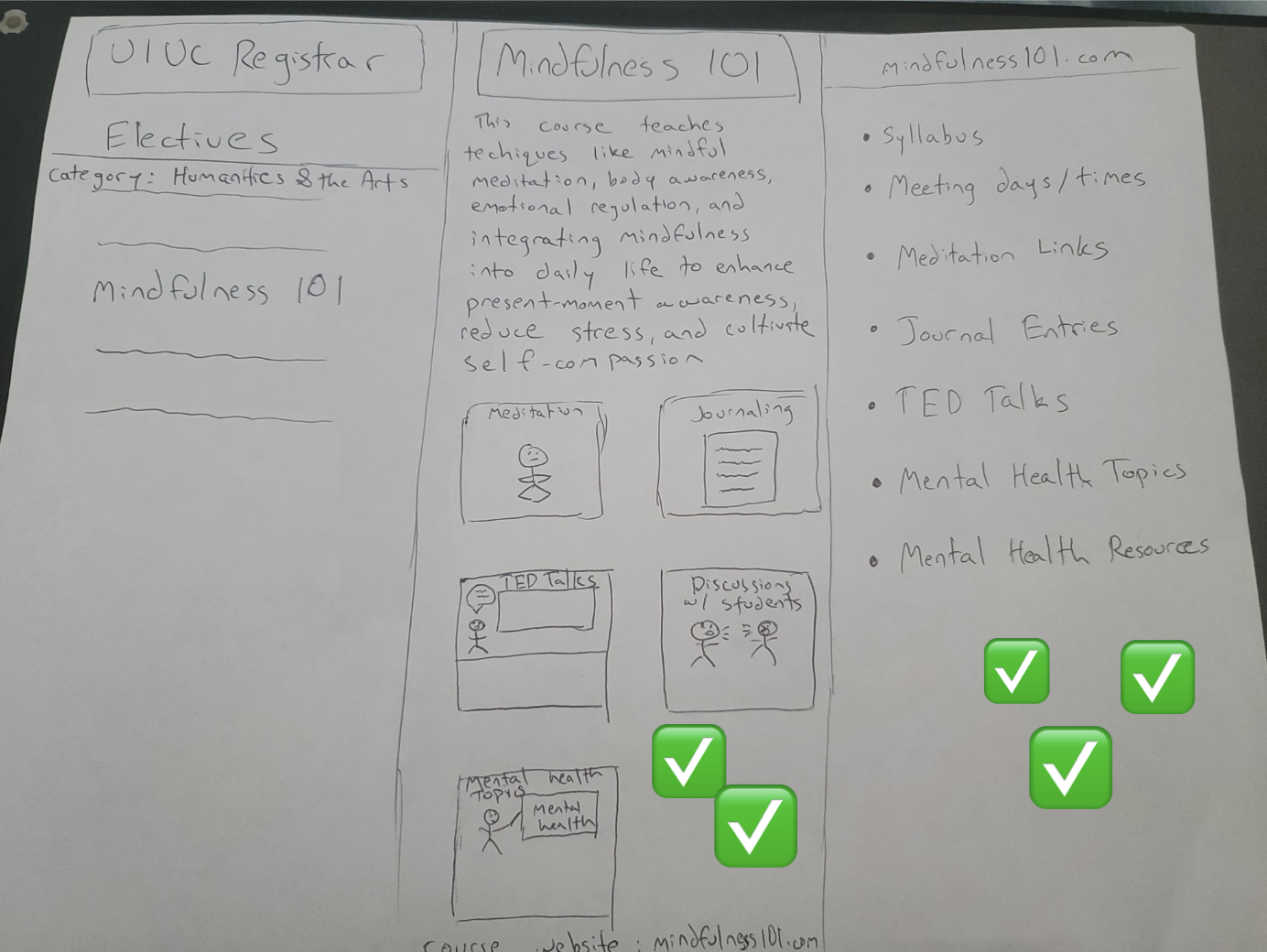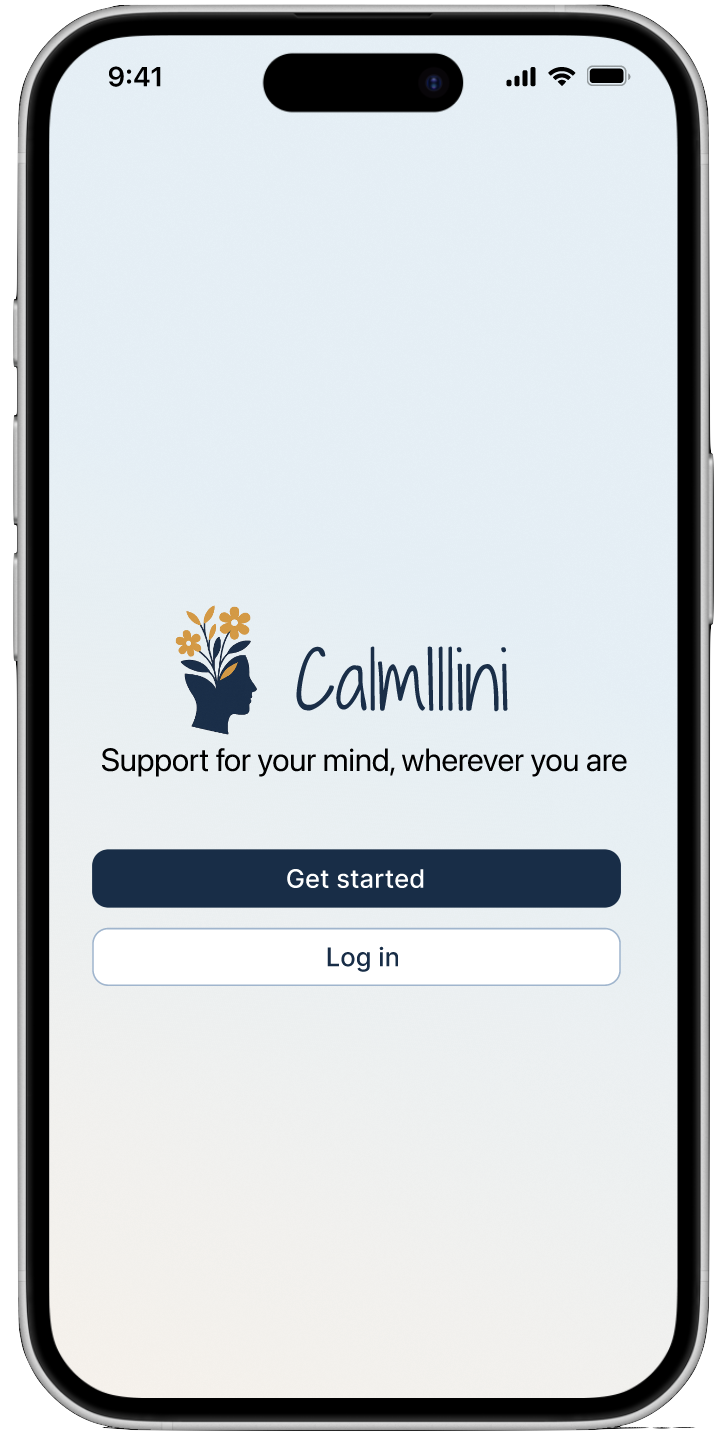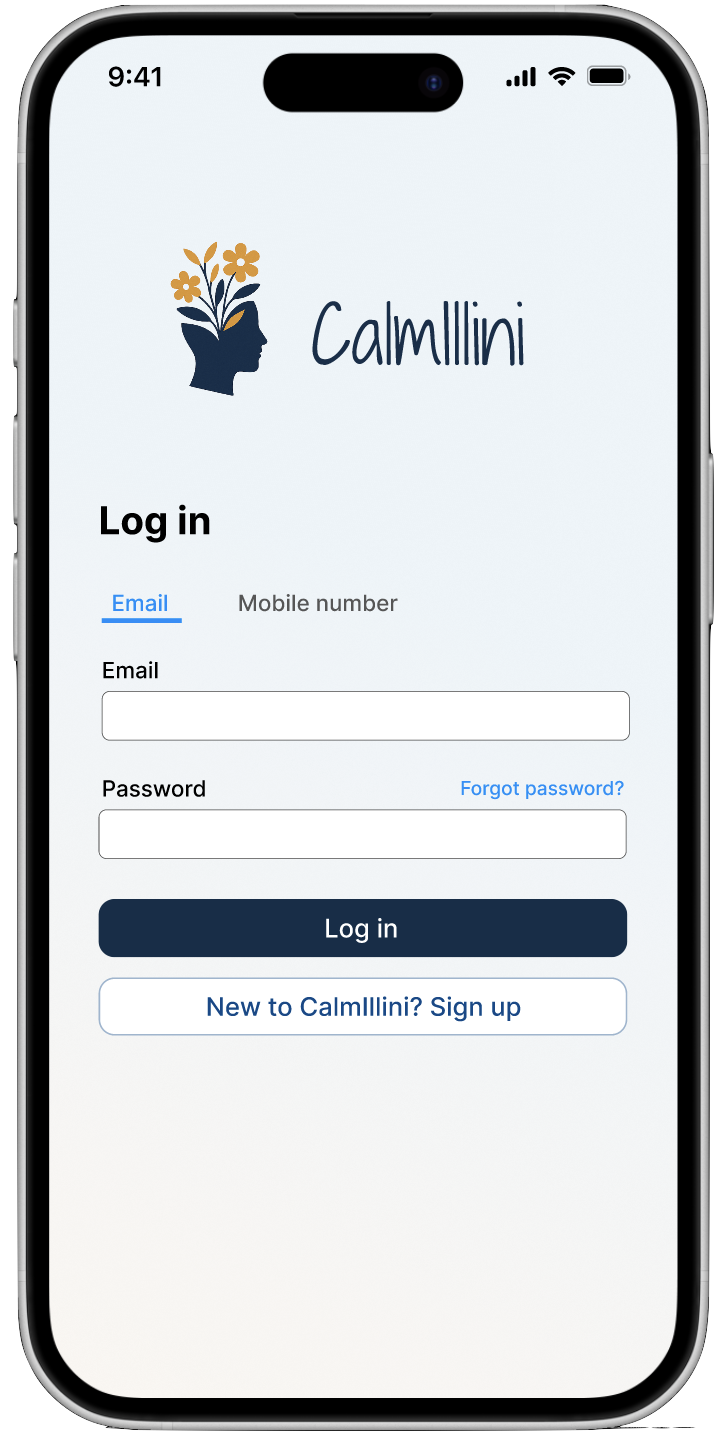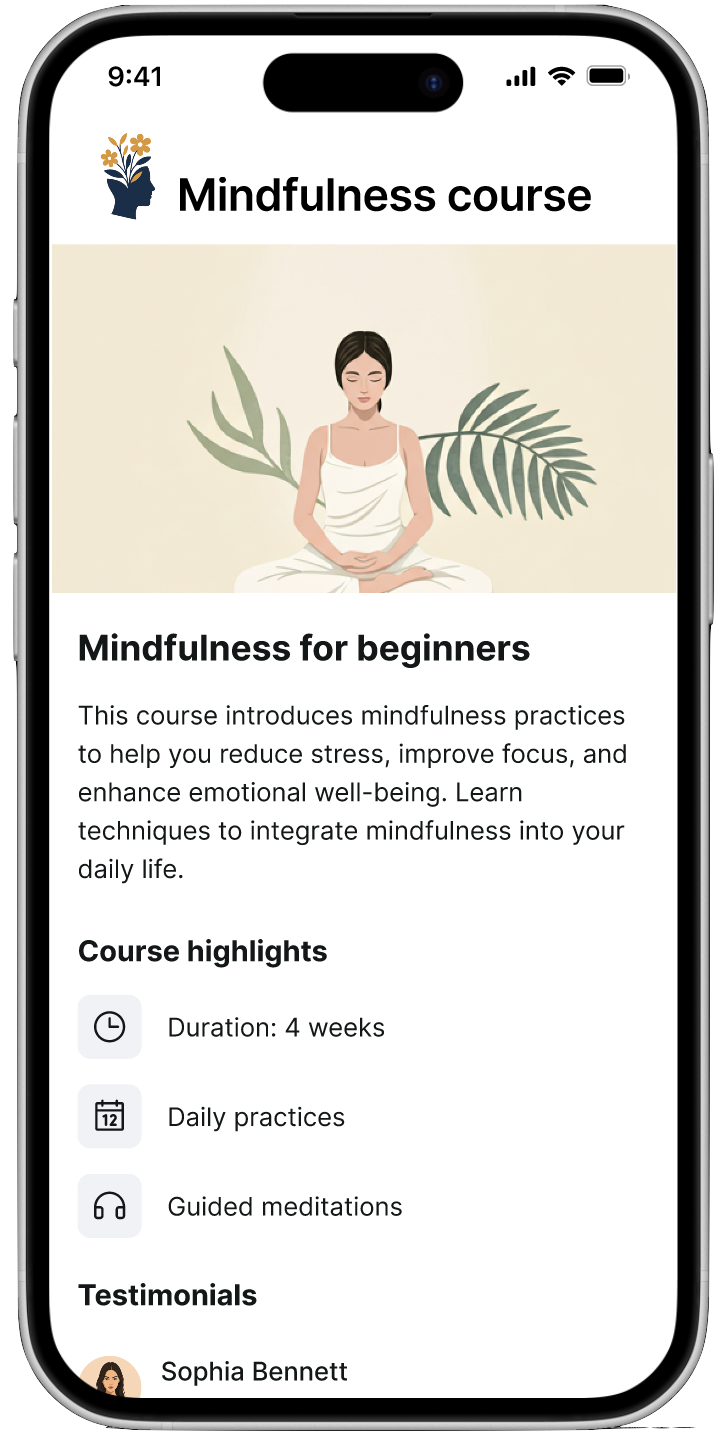CalmIllini
Overview:
CalmIllini is a digital platform designed for UIUC students struggling with stress, anxiety, and mental fatigue. Our goal was to create a central hub for mental health resources, combining journaling, meditation, and peer-based support into a single accessible experience.
College students face academic and career pressure, inconsistent access to mental health resources, and difficulty sustaining healthy coping strategies.
Problem:
Create a one-stop digital hub that makes resources visible, accessible, and personalized — supporting students’ mental health journeys more effectively.
Solution:
UX Designer + Researcher
My Role:
1 Project Lead, 2 Researchers, 1 UX Designer
Team:
Miro, Figma, Canva, Google Slides, Google Forms
Tools:
Timeline:
Aug 2024 – Dec 2024
Understanding the user
As college students, we wanted understood that many of our peers struggled with mental health problems. We decided that it would be best to focus this product on students that went the University of Illinois Urbana Champaign and were in the ages between 17 to 22.
We decided to go through the process of segmentation, starting from college students and narrowing it to “UIUC students dealing with academic anxiety, stress who have an interest in journaling and meditation.”
We created a journey and empathy map to get a better understanding of our overall goal for the platform, as well as how the user would feel through the flow of CalmIllini.
Coping techniques people use bring them delight
Aspects of academia bring people pain points
Inconsistent resource visibility (saturated, but not easily visible)
Lots of Googling
Techniques people want to learn vary
Academic stress impacts student mental health
Students tend to engage in familiar activities to combat mental fatigue
Students found campus resources satisfactory, but not sustainable
Most people found resources through same means
Interview Insights
“It’s frustrating trying to find the resources that UIUC offers. A lot of the time I get stressed from school work, especially around finals season”
Persona
Interest Survey Data
Self reported, people…
Sometimes meditate and journal, otherwise express interest in doing so
Feel motivated if it’s personalized, private, always available and easily integrated
Feel concerned by lack of time, lack of motivation to use the digital hub consistently, and resources being unhelpful
At a glance:
Total Responses = 24
Between Friday 10/18 - Wednesday 10/23 at 2 pm
Success Metric Target: 70% response rate for “yes”, plus email addresses
Problem Space Survey Data
Relating to our goals
Academic stress moderate to overwhelming, in line with course work
Cognitive impact high
Although interest rate decreased, people express significant interest in using their social networks
We cannot confirm that journaling and meditation are current effective methods BUT there is established interest
Goals:
Student relationships to academic stress
Assess how social life relates to academic stress
Validate whether journaling and meditation are effective
New segmented core audience: students experiencing academic stress
SWOT Analysis
MANUAL
Mantra Health
Koru Mindfulness
CAPS
Summary/Results
2 out of the 4 competitors incorporated 1:1 care
If a platform had journaling, they did not have meditation
We could incorporate both meditation and journaling
Direct competitor - Mantra Health
There is already a “all-in-one solution” (Shows our solution is viable)
We need to find what we can add to our platform to make our solution better
Competitive Analysis
Each member of the group came up with 2-3 features that the application should incorporate. We then voted on the most important features and moved on with them.
Sketches
Prototyping
Reflection
Through this project, I was able to develop my communication skills within a team as well as learn more about the entire design thinking process. Overall, I learned how to approach problems with empathy while also, embracing failure as part of the process. As a team, we realized the importance of understanding users’ needs deeply before jumping to solutions. While the above prototypes were initial designs, the next steps would be to refine the prototype to create a fully functional application and then to move on to the development phase of the design process.

